We’ve examined the many ways to improve your brand’s lead generation results. In this post we look at some strong examples and assess the channel being used for each lead generation campaign and where it fits in the sales and marketing funnel.
But back up a second, we’re here today to talk about examples of lead generation—a method used by marketers everywhere to find people who might be interested in becoming a customer one day.
Typically, if lead generation is your goal, you’re looking to find ways to collect the contact information of people who you think might become a customer someday—that way, you can continue to connect with them, stay top of mind and nurture them into doing so.
Today we’re going to take a deep-dive into examples of different lead generation campaigns, content types and tactics used by various companies from different verticals. We will also show you the lead generation channels used for each campaign
Let’s begin with a couple of paid lead-generation campaigns that utilize the fast-growing content discovery advertising channel.
Lead Generation Strategies
In the previous section, we shared a good overview of how to create buyer personas and increase online leads in your sales and marketing funnel. Now, we will expand on these ideas and delve into specific strategies to consider adding to your lead generation marketing strategies.
How to Generate Leads with Digital Advertising
Advertising is far from dead. It’s simply evolved. More often than not, the age-old practice of simple interruption or distraction has given way to presenting ads more in line with the prospect’s needs. Technology makes possible the data-driven approach that evaded us in decades past.
Let’s look at some of the paid-marketing strategies brands use for online lead generation:
1. Search engine advertising
While the pay-per-click (PPC) model applies to various ad types, search engine advertising remains its most popular form and Google’s still its revenue champion.
Running search engine ads is a way of buying visits to your site. As an advertiser, you bid for placements on the search engine results pages (SERPs) when someone searches for a relevant term.
For example, a quick search for “marketing tools” reveals ads from companies like Bronto, PWC, Capterra and SurveyMonkey.
Lead Generation Examples and Channels
Discovery
1. Advertiser: SEMRush
- Channel: Discovery
- Strategy: This native ad is programmatically placed in a newsfeed to create top-of-the-funnel awareness for the SEMRush software platform. Click through on the ad and you’re taken to an informative ‘tips’ article on the SEMRush blog.
- Of note: The blog post features two offers to try a Software-as-a-Service (SaaS) product, but if it fails to generate clicks for doing so, the campaign doesn’t end there—Stay tuned for more on SEMRush’s middle of the funnel strategy for this campaign.
2. Advertiser: Bombas

- Channel: Content discovery
- Strategy: This native ad, which I discovered on The Weather Channel, is actually bottom of the funnel content. Its purpose is to drive sales. The ad leads to a well-designed landing page featuring a list. As the ad promises, the landing page delivers ‘8 Things that Make Bombas the Best Socks in the History of Feet.’
- Of note: This landing page pulls out all the stops. It details features of the socks; the company’s ‘purchase one, donate one’ policy; social proof in the form of a testimonial and media review; and a guarantee. To make the landing page even more compelling, several images are GIFs.
We’ll now look at another popular paid lead-generation strategy, best thought of as a middle of the funnel tactic: re-marketing.
Re-marketing
1. Advertiser: SEMRush (as shown previously)
Re-marketing

- Channel: Re-marketing
- Strategy: A browser cookie informs the Google Ads display network that I had previously clicked-through on a SEMRush ad and it reminds me to return. This is a middle-of-the-funnel tactic. The hypotheses at work here is: I have shown some interest and the decision I may soon make regarding SEO software might be moved along faster with some lead nurturing.
- Of note: SEMRush’s lead-generation campaign turns over many stones. Below you’ll see additional re-marketing efforts that landed in my path as I traversed affiliated sites.

A page-top, mostly text-based banner ad.

A webpage sidebar ad.
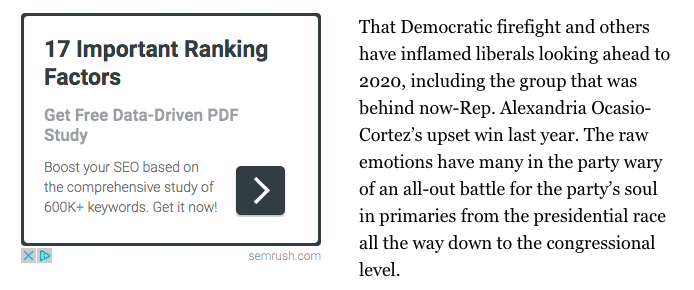
An in-article re-marketing ad.
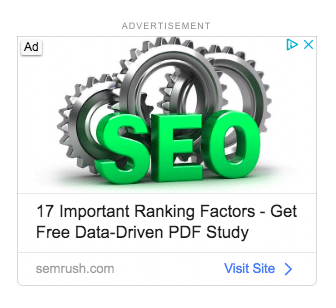
Same offer, different strategy.
Native advertising’s reigning money-making king remains search engine advertising.
Lead Generation Strategies with Content
Digital marketing affords you a great many opportunities to generate traffic organically and convert visitors to leads, by offering various types of content potential buyers will value.
‘Lead magnets’ is the moniker often attached to free content assets that require a prospect to opt-in to your email list as the price of admission. So, next we’ll examine online lead generation strategies that aim to convert a visitor to a subscriber.
1. Blog
A blog is the grandmaster of all content-marketing strategies. Only in rare cases would admission to your blog require a visitor to fill out a form, however, your company’s blog is the home to articles, images, video, audio or any digital assets that might inspire a visitor to become a prospect.
Think of your blog as a gateway to lead generation. Done well, a blog can also:
- Position your company and people as subject matter experts
- Earn search engine rankings
- Inspire a dialogue with prospects
2. Big Content
I wish I had a better name for this one, but big content will have to do. Your big content might be industry research reports, educational eBooks, online courses, a series of videos, and more. The key here is to offer content that is free, but so valuable that many might pay for it if asked to do so.
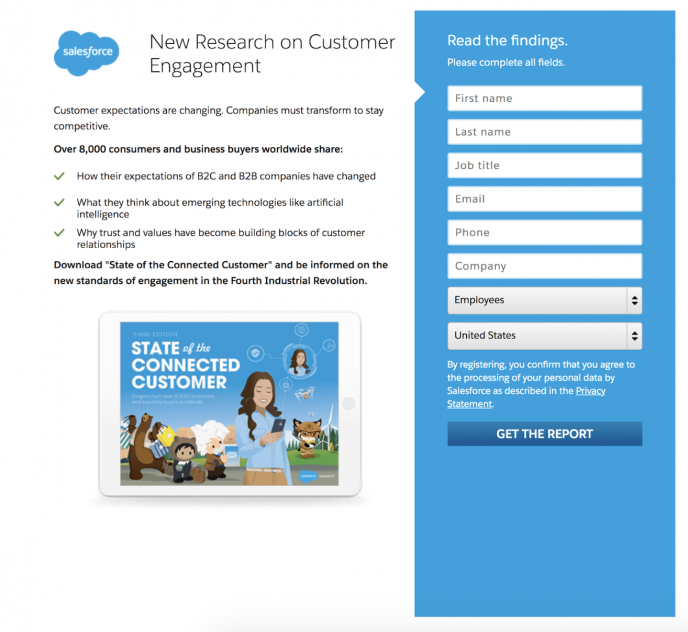
3. Video
Video is sometimes gated. This means a form will be a part of the process by which a prospect gains access to your content.
A 60-second explainer video (a commercial, basically) should not require a form fill, however, various types of educational and/or entertaining videos are perfect for online lead generation.
4. Webinars
Though they require a good deal of planning, preparation and promotion, webinars are one of today’s best online lead generation strategies, especially for B2B marketing.
Effective webinars tend to focus on specific problems and challenges people face. They can also add a degree of interactivity to increase engagement. Recorded webinars become an evergreen asset and repurposed webinar content can support a variety of additional lead-generation programs.
Search Engine Advertising
1. Advertiser: Multiple snoring remedies
Search Engine Advertising
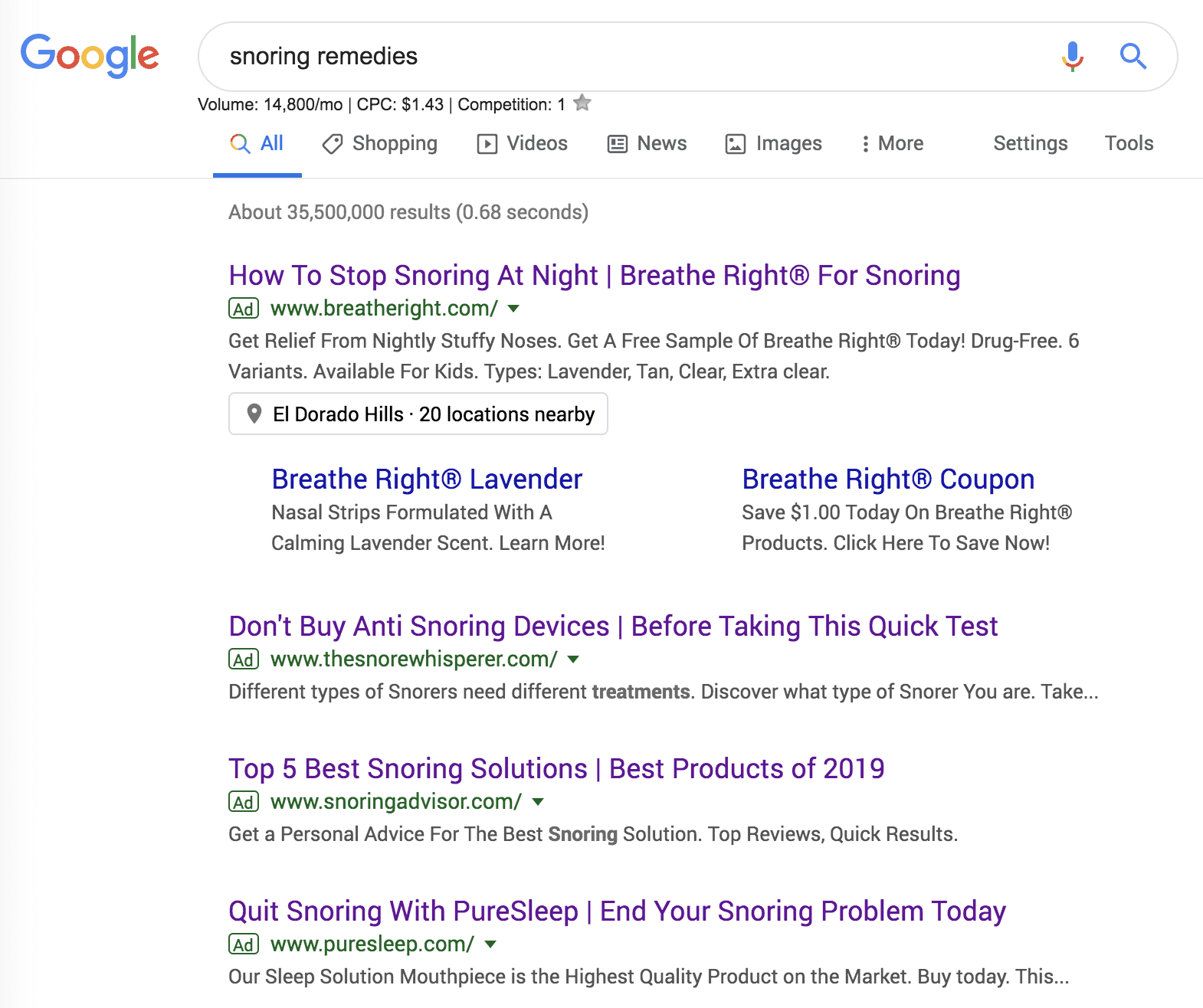
- Advertiser: Multiple snoring remedies
- Channel: Google Ads pay-per-click
- Strategy: Interestingly, the four advertisers who ranked atop my search results and paid for my clicks went with different landing-page strategies.
- Breathe Right’s landing page offered tips, a sleep checklist, four relevant articles, a coupon and a free sample offer, plus many links. The Snore Whisperer’s landing page presented a quiz, an effective mechanism as an interactive lead-generation strategy.
- Snoring Advisor appears to be an affiliate site. Its landing page offers reviews, videos, and more.
- PureSleep’s landing page was the company’s homepage with a tracking code.
Advertiser: Multiple snoring remedies
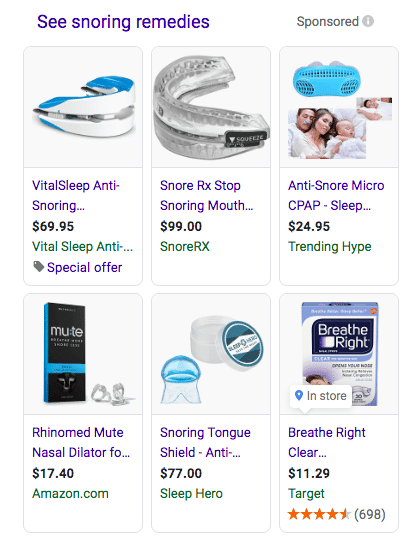
- Channel: Google Ads pay-per-click ‘shopping ads’
- Strategy: As you see here, competing makers of snoring remedy devices appear as shopping ads, which sometimes feature images, offers, and reviews.
- Of note: According to Google, shopping ads use existing Merchant Center product data, rather than keywords, to decide how and where to show your ads.
2. Social Media Advertising
Facebook dominates social media advertising and many brands deem it a necessity for reaching followers with any degree of predictability.Of course, Instagram (a Facebook company) LinkedIn, Twitter, YouTube (a Google company), Pinterest and many others offer social media ad programs.Social media ads take many forms and the programs perpetually evolve. Like search, social media advertising is often based on a PPC model.
1. Advertiser: Seismic Software
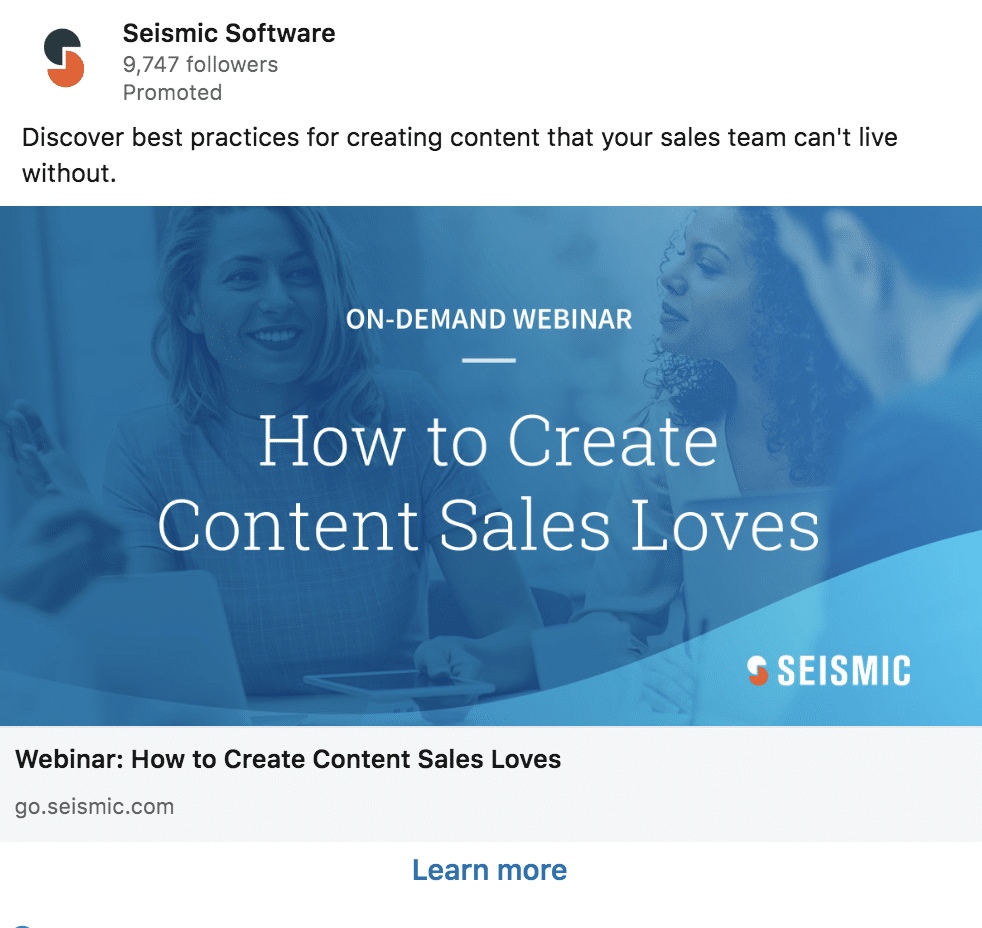
- Channel: LinkedIn
- Strategy: While B2B brand companies often advertise on multiple social media channels, LinkedIn’s business-minded audience makes it a popular choice.
- Of note: This ad campaign promotes a webinar to support top-of-the-funnel brand awareness. It uses the LinkedIn Lead Gen form, meaning a click immediately produces a pop-up form. LinkedIn claims this approach increases conversions by two or three times, compared to standard sponsored content campaigns.
2. Advertiser: Datorama
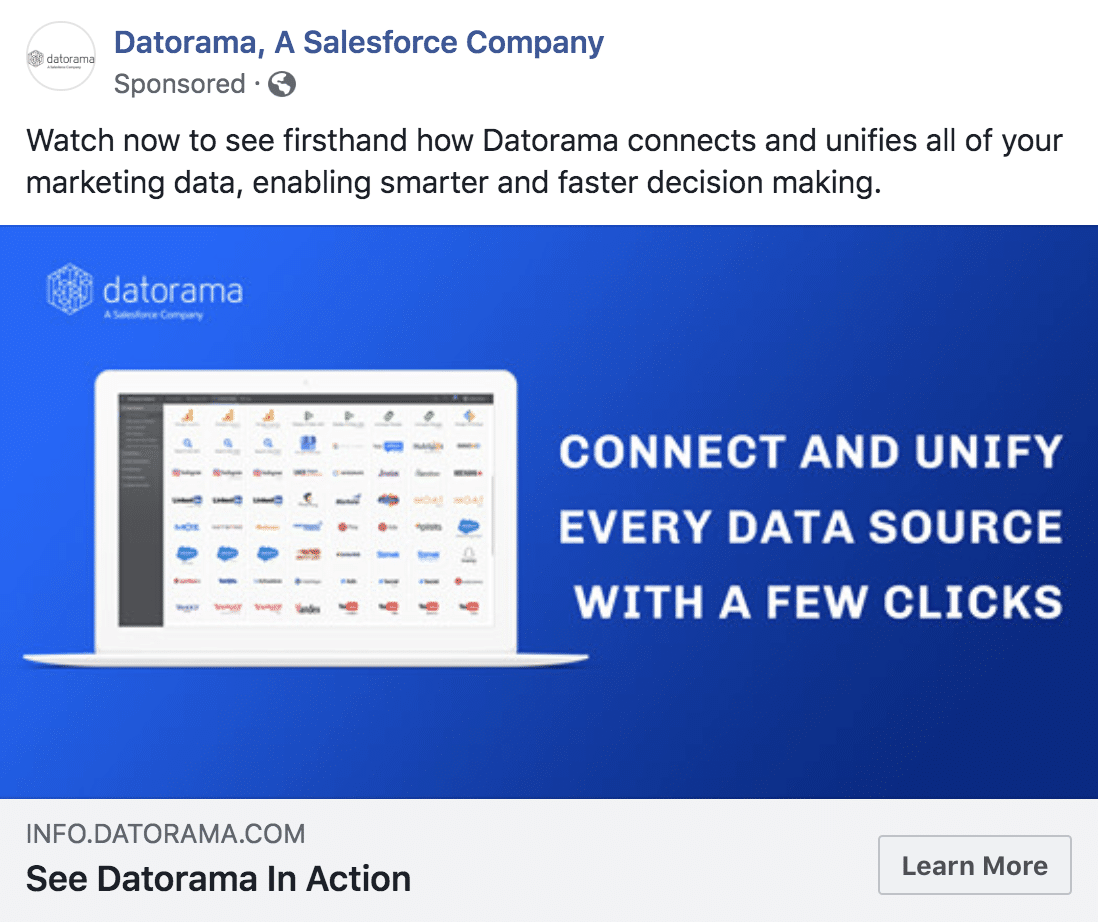
- Channel: Facebook
- Strategy: Here, Datorama takes advantage of Facebook’s robust database by serving a marketing professional like me a middle, or maybe, bottom-of-the-funnel ad.
- Of note: The ad’s landing page offers a video demonstration using a gated form —with two drop-down fields — to collect lead data.
3. Advertiser: SmartAsset

- Channel: Twitter
- Strategy: This is a top-of-the-funnel lead generation tactic found in my Twitter feed.
- Of note: The ad’s landing page serves a multi-step form claiming the information provided enables SmartAsset to find an ideally matched financial advisor.
Next, we’ll examine a variety of effective tactics for capturing leads on your website.
On-Site Marketing
In our post about lead-generation campaign planning, we look at important steps, including creating an offer and optimizing your lead-capture mechanisms. Now, we’ll look at some examples.
1. Advertiser: Wells Fargo
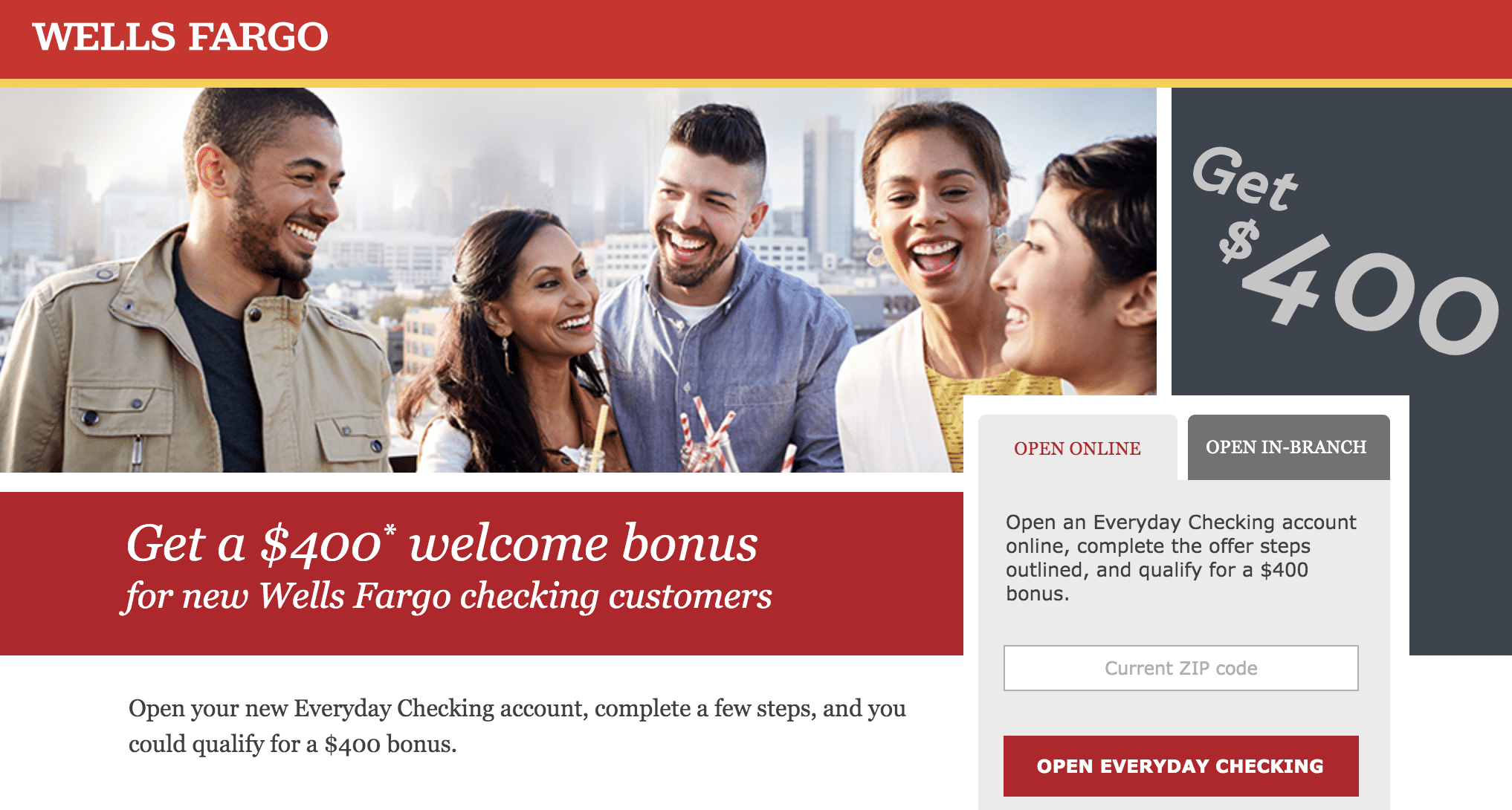
- Channel: Content discovery ad
- Strategy: Wells Fargo aims to entice new checking-account customers with a $400 welcome bonus.
- Of note: Though free educational content has been a raging hot strategy for a decade or so, free money—or discounts—has, and always will be, an effective strategy.
5. Sponsored Content
Sponsored content is another type of native advertising found on media sites. The ad —and the content it links to (usually long-form) — is generally created via a collaboration between the advertiser and the host publisher.
Sponsored content takes many forms including articles, videos and reports. It usually focuses on educating the prospect.
6. Remarketing ( or Retargeting)
Remarketing or Retargeting ads are not necessarily native; they often take the form of the digital display ads that have populated the web since the 1990s.
Retargeting ad programs track people who visit your site and later display your ads to them as they visit other sites. For obvious reasons, retargeting ads often prominently feature an offer.A
1. Advertiser: Otty’s
Otty’s Taboola retargeting campaigns generating 10x the results of those that weren’t using retargeting—they did so by simply retargeting previous site visitors that hadn’t taken action before.
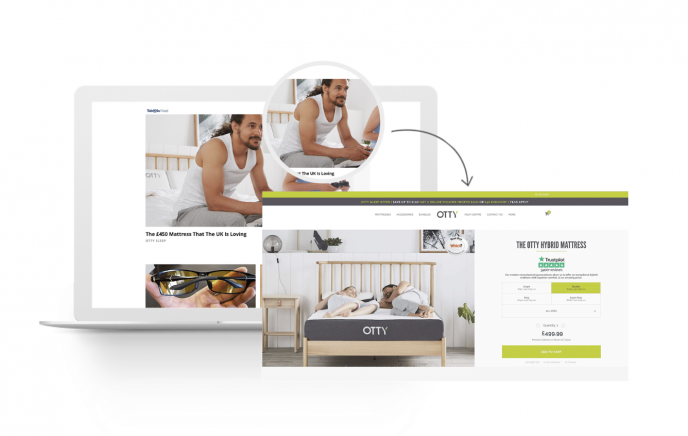
4. Advertiser: CloudShare
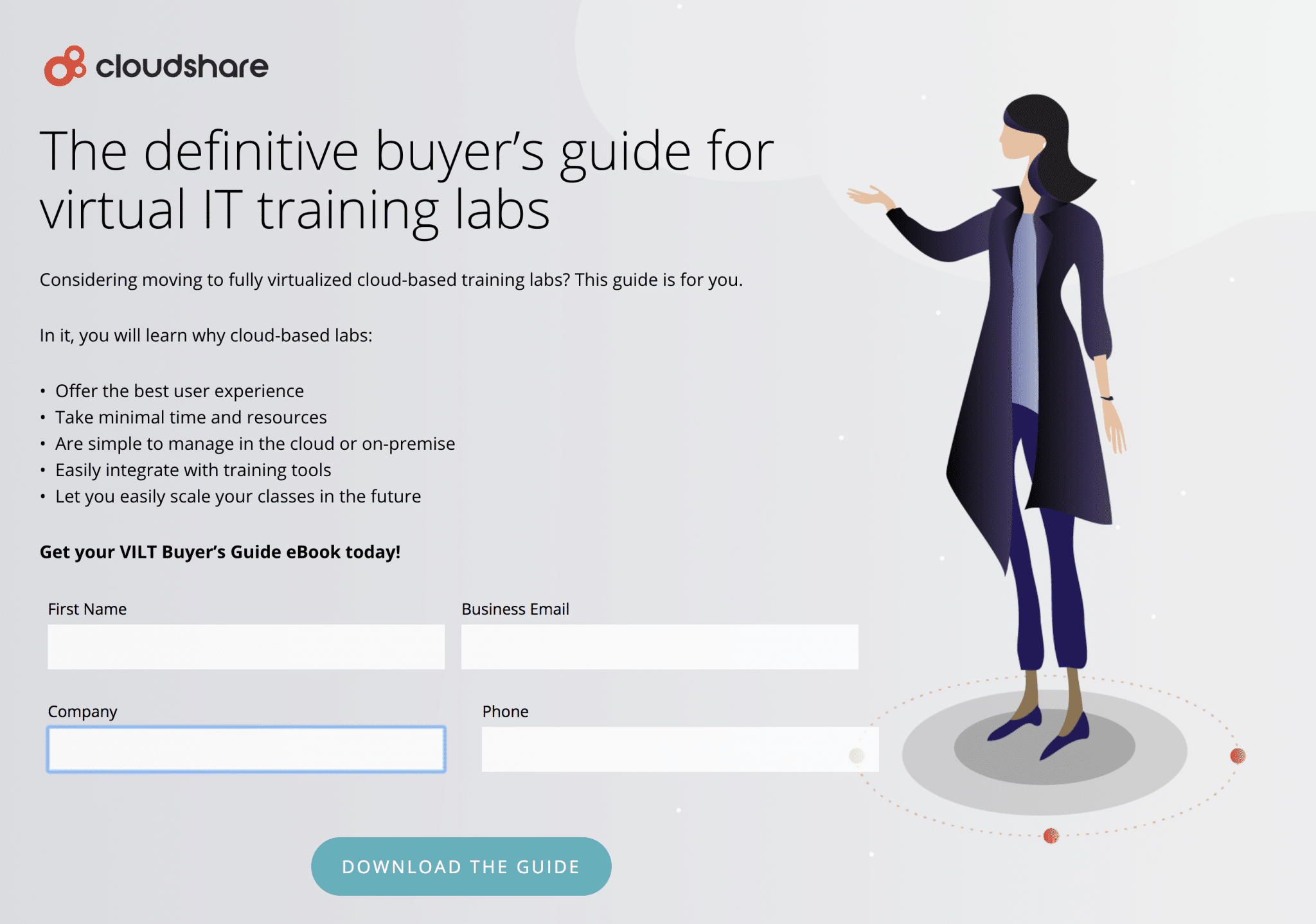
- Channel: LinkedIn sponsored post
- Strategy: In the B2B space, offering a free eBook remains a popular strategy for top-of-the funnel content and lead generation.
- Of note: The landing page that offers a downloadable is likely to convert well when it (1) gets to the point (2) lists the reasons to take action and (3) requires little information from the visitor.
3. Native Advertising
The online dictionary says: “native advertising is blurring the lines between advertising and content.” Native advertising is a form of paid media where the ad experience follows the form and function of the medium on which the ads reside.
Native advertising takes many forms, including search engine advertising and social media advertising. Native advertising is also a powerful play beyond the ‘walled gardens’ of Google, Facebook, etc. and affords advertisers greater scalability.
4. Discovery Advertising
Discovery ads are the native ad form that fuels Taboola’s business. Discovery ads showcase brands and the content they offer on publishers’ websites.
Labeled ‘sponsored’ or ‘recommended,’ they commonly appear below, beside or within articles . They do not resemble traditional banners and generally include a single image, title and brand name (but no logo).
3. Advertiser: Chewy

- Channel: The Chewy.com website
- Strategy: Chewy makes this special offer for what you might call the ‘post-funnel’ stage. The intention is to foster relationships with existing customers with a win-win special offer that rewards the customer with savings and convenience and the brand with loyalty.
- Of note: I’m an existing customer. Out of curiosity, I logged out and when I returned to the site I found the 30% off became 60% for first-timers.
6. Interactive content
Interactive content is a big and expanding online lead generation strategy. Interactive tactics often include a degree of gamification with promotions such as quizzes, contests and sweepstakes. Tactics, such as assessments, surveys and buying guides, serve to (1) help buyers make informed decisions and (2) deliver customer insights to marketers.
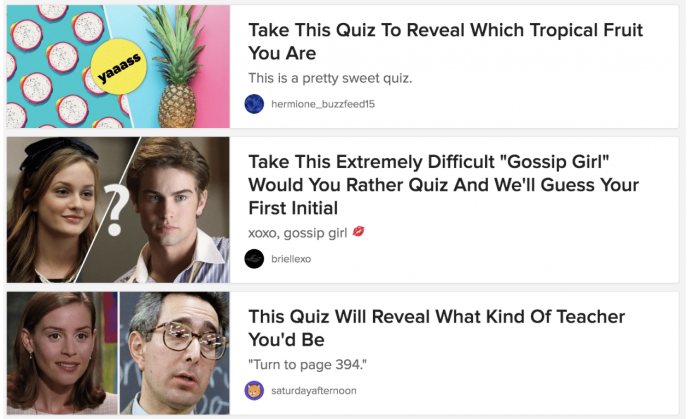
BuzzFeed helped make the interactive quiz a staple of marketing.
7. Tools and apps
Consider extending your interactive content portfolio to include tools and apps that engage and inspire prospects. Calculators, templates, evaluations, and virtual reality (VR) or augmented reality (AR) applications are a few of the tools marketers offer customers aiming to make smart buying decisions.
4. Advertiser: UNIQLO

- Channel: The Uniqlo.com website
- Strategy: This lead-generation program is a discount and then some.
- Of note: This promotion doubles down on lead generation by requesting the person that opts in to refer a friend.
2. Pop-ups
Pop-ups get a bad rap as marketers often feel they detract from the user experience and chase customers away. The truth, however, is pop-ups can increase conversion.
If you’re new to using pop-ups on your website, experiment with the options pop-ups offer, such as interstitials, exit-intent, slide-ins, and the like. Many of the services that enable you to deploy pop-ups on your site offer options to change the timing, frequency, and pages on which your pop-ups appear and may enable you to A/B test your tactics.
Try different approaches and closely monitor conversion metrics to find a fit for your audience aligned to your marketing objectives.
3. Chat
Chat is growing in popularity. Most customers would rather chat than call or email. Employ chat services manned by live agents, automate the exchanges, or a combination of both.
This example from SoBo stylist shows how you can use a chatbot to do things like book appointments with potential consumers.
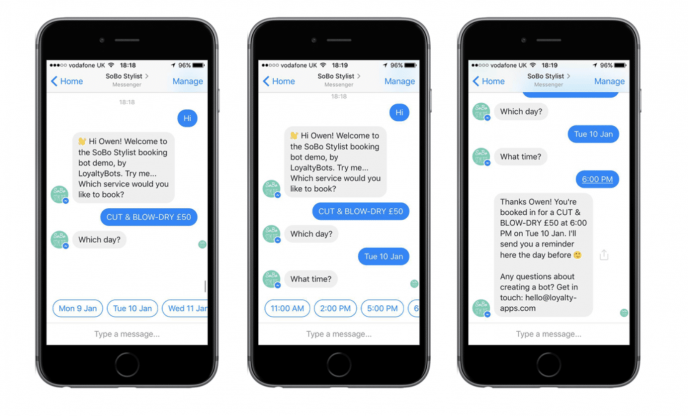
While chat first caught on as a customer service feature, it’s now widely used to engage first-time visitors and help them find the answers they seek.
Earn leads by increasing your digital footprint
Let’s look at offsite lead-generation strategies that don’t depend on buying media. I like to refer to the idea of ‘earning’ media as an exercise in increasing your digital footprint.
1. Organic Search
In this era of continuous and nearly ubiquitous connectivity, most buying exercises begin with search.
As such, generating traffic via organic search is all-important to global, regional or local businesses. Any business serious about generating leads must develop some understanding of search engine optimization (SEO). While dominating search engine results is a complex undertaking, the process of indicating to the search engines your page is relevant to a specific search term, or keyword, is a simple process.
2. Social Media Content
As younger generations expand and seize the largest chunk of the workforce and consumer buying power, social media is vital for your brand.
Does this mean you must make yourself known across every social network? No. Your social media marketing strategy should focus on identifying where your potential customers are active and what types of content gets them to click, comment, and share.
3. Q&A Sites and Forums
Question and answer sites, such as Quora, are another form of social media where your brand can raise its presence, deliver value and generate leads.
Forums too – be they groups on social media, industry specific exchanges, or forum-based sites such as Reddit— attract people with like-minded interests in pursuit of solutions to the challenges they face at work and in their lives.
4. Guest Blogging and Syndication
Q: What’s a brand to do when it struggles to build its audience on its blog or website? A: Get published on sites that already have a big (or highly-focused) audience.
This is guest blogging. As part of your larger lead generation strategy, guest blogging can boost reach to target markets, elevate authority, secure backlinks to your site, and capture new sources of traffic likely to subscribe to your blog and/or explore what your website and company offers.
5. PR
PR works in tandem with paid advertising, content marketing, events, and a variety of marketing tactics both online and off to generate traffic and leads. Editorial placements earned through PR also help increase conversion rates by winning credible, third-party endorsements.
5. Advertiser: WordStream
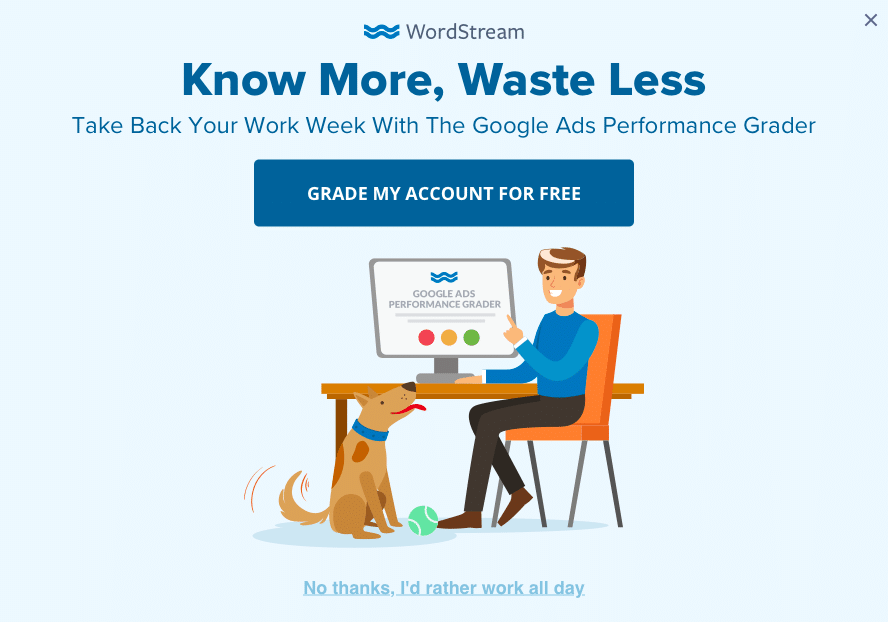
- Channel: The company’s website.
- Strategy: The lead generation strategy at work here offers a free assessment in exchange for an email address. In the process, it collects a few helpful data points.
- Of note: For quite a few industry types, offering these types of tools is effective. In addition to offering the ads performance grader on their homepage, WordStream also makes the offer via landing pages connected to pay-per-click (PPC) ads, and as an exit intent popup. Obviously, it’s had some success with this lead-generation program and is, therefore, using multiple lead generation tools to promote it.
Make your website a lead generator <h2>
‘Owned media’ is a term often associated with digital assets deployed on your website and blog where you have complete control.
1. Landing Page
While a landing page resides on your domain, it should function differently to a standard web page and focus on a specific offer with a singular call-to-action. Landing pages often serve as the gateway to delivering an offer associated with a digital ad or any type of lead generation element that appears somewhere other than your website.
The style and content of landing pages differs greatly, but the common denominator is they focus on converting the visitor with the use of a form or sales mechanism.
1. Advertiser: Casper
This one from Casper clearly indicates the one action they want site visitors to do—shop.

Learn more about some of our favorite lead-generation tools here
Below is a section of a landing page that demonstrates what the deliverable will include:
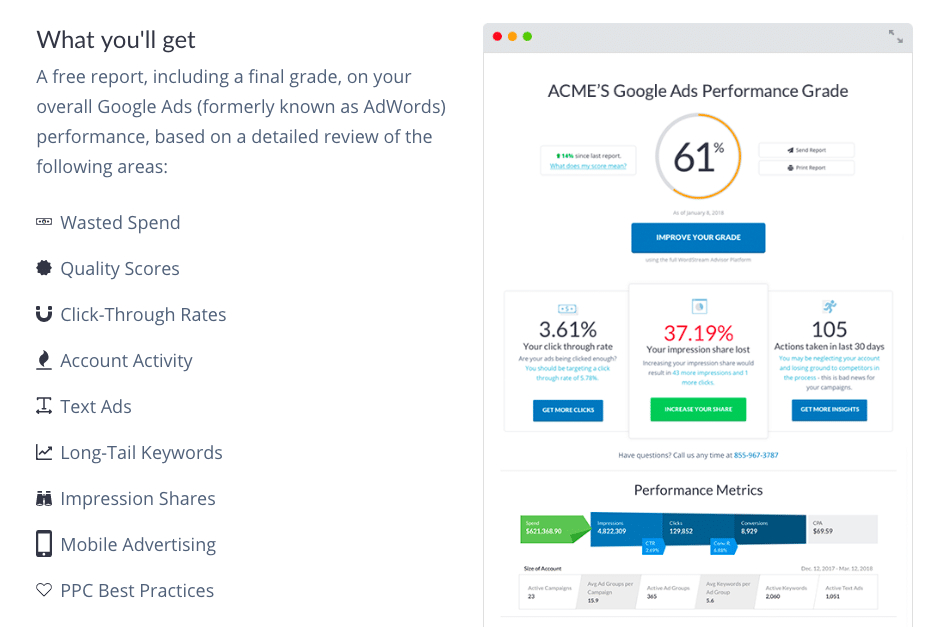
38 Case Studies From Brands That Have Succeeded With Taboola
38 Case Studies From Brands That Have Succeeded With Taboola
5. Advertiser: EnergySage
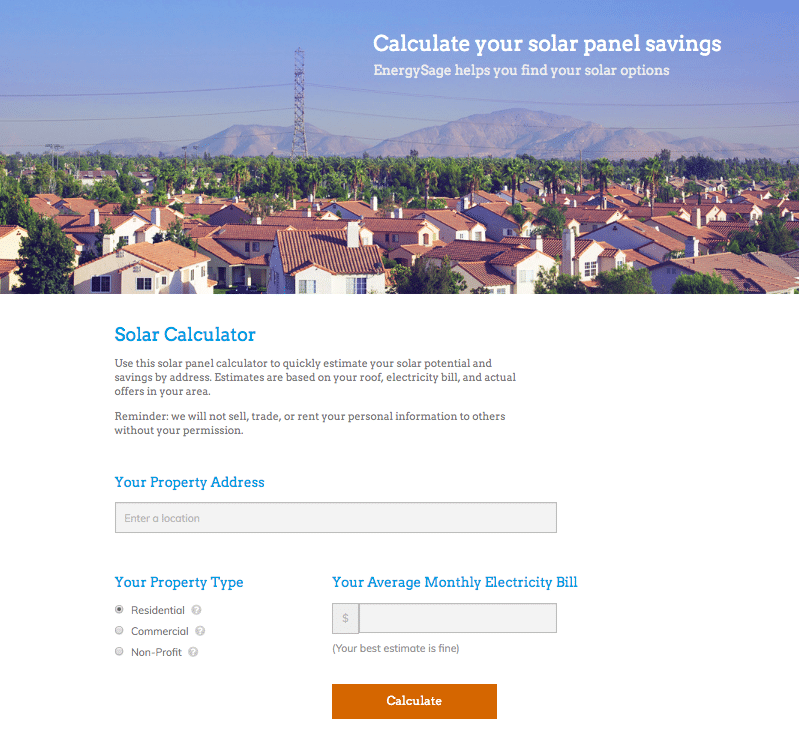
- Channel: The company’s homepage
- Strategy: Here again is a powerful example of a company offering a valuable tool. In this case, the idea is to calculate the potential savings of using their system, which can drive the prospect from the middle to the bottom-of-the-funnel.
- Of note: Like the example above, in addition to being offered from the homepage, the calculator serves as a landing page for digital lead-generation ad campaigns.
5. Advertiser: Kajabi
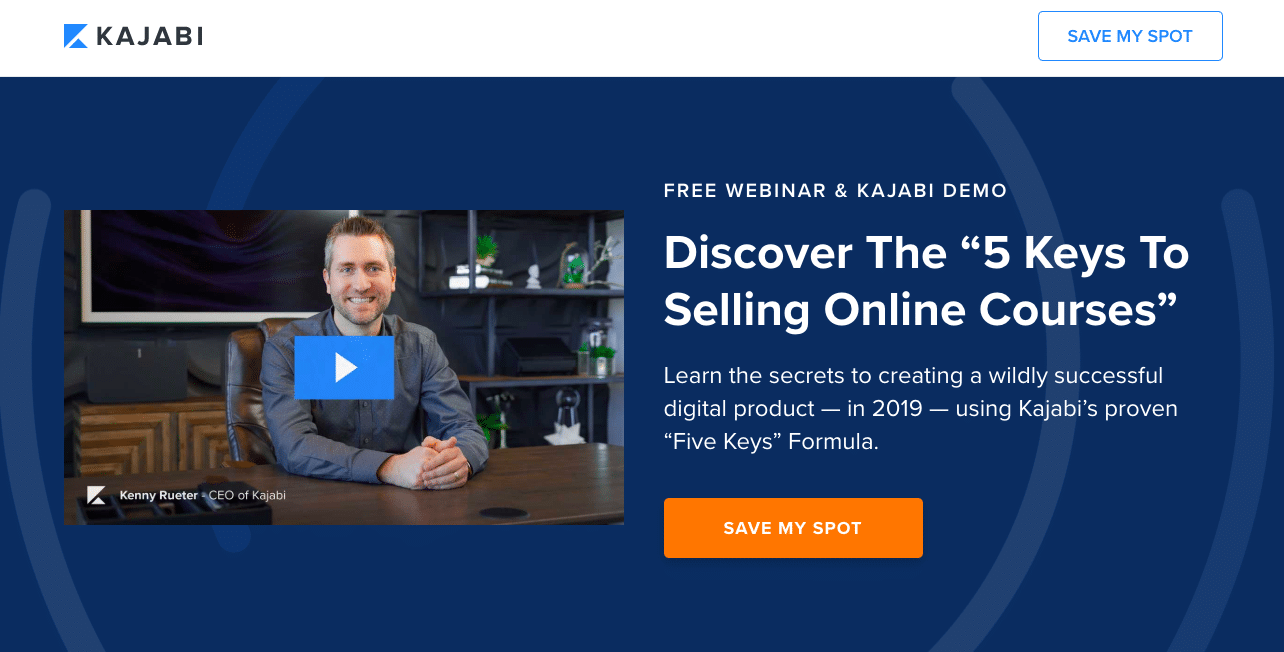
- Channel: The company’s homepage
- Strategy: Webinars are valuable for top, middle and bottom-of-the-funnel marketing — depending on how they’re promoted and what they include. My guess is this webinar aims for the middle-of-the-funnel, but includes an offer aimed at closing deals.
- Of note: Kajabi’s webinar is offered every day, which suggests it’s prerecorded. As such, this lead-generation strategy is remarkably cost-efficient.
5. Coupons and rewards
You can’t discount the power of the discount. In many industries, financial incentives are what most motivates would-be buyers to act. Coupons present the most obvious form of lead generation here, but a number of rewards programs such as discounts, bonus offers, and loyalty programs can work to create leads, generate sales, and customer loyalty.
